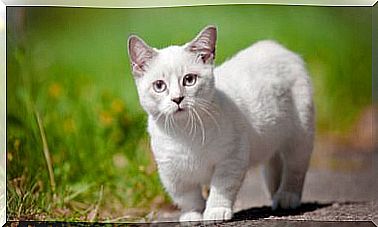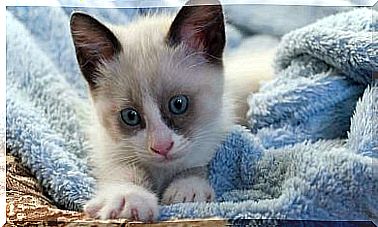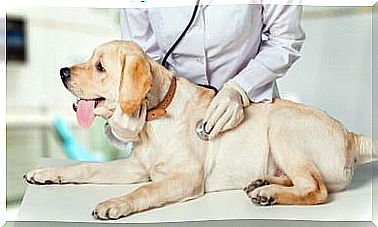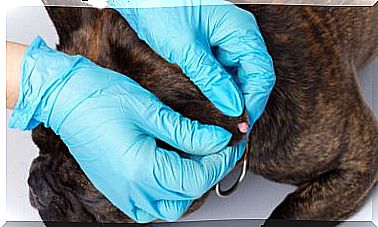What Is A Cat Food Allergy?
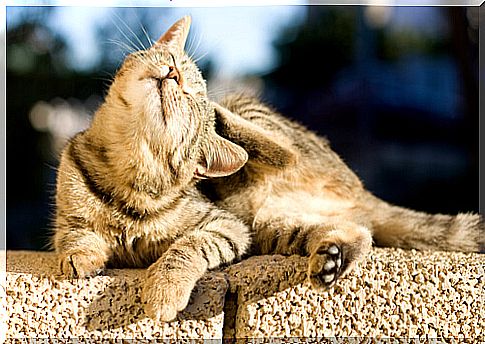
Food allergies occur when there is a hypersensitivity to certain components of food. In the case of cats, these reactions appear mainly in the form of dermatological problems, although gastrointestinal, respiratory and central nervous system manifestations can also be observed. Determining what substance is causing your kitty’s allergy will require time, patience and commitment on the part of you and your pet’s family veterinarian.
How does a food allergy manifest in cats?

The adverse reaction to one or more components of the diet is known as food hypersensitivity. It is an immune-mediated phenomenon, in which antibodies are produced against an allergen, which is the substance that causes the allergic response.
When your cat eats a food that contains this substance that his immune system does not tolerate, there is a release of histamine. The main sign of food allergy in cats is the great itching that your kitten experiences, which will try to calm the itch by licking, scratching or nibbling the affected areas, which are mainly the face and neck. It has been proven that between 10 and 20 percent of skin problems in domestic felines are caused by a food allergy.
Itching can occur with:
- General redness of the skin
- Hair loss
- Miliary dermatitis
- Crusted areas
- Flaking
- Ulcers
- Eosinophilic granuloma
In addition, due to excessive licking of the affected areas, color changes tend to occur in the coat, which usually takes on a reddish or oxidized hue, due to the effect of saliva.
Other manifestations related to food hypersensitivity in cats are:
- External otitis
- Inflammation of the eyelids and lips
- Vomiting
- Watery diarrhea
- Inflammatory bowel disease
- Colitis
- Hyperactivity
- Hyperesthesia
- Asthma
- Seizures
Symptoms and signs may manifest immediately or take time to appear. And while all the components of your kitty’s diet are potential culprits for her allergy, protein seems to take the cake.
Diagnosis and treatment of food allergies
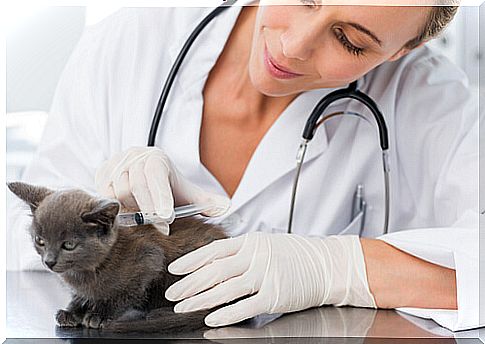
Food is the third leading cause of allergy among cats. And, among the foods that cause it, we can mention dairy, beef, fish, chicken, eggs, soy, corn and wheat. Some additives can also be the culprit.
To reach a diagnosis, an extensive dietary history of your cat should be carried out. It is the only way to identify all sources of protein in the diet. Elimination diet and laboratory tests will also need to be done.
These diets aim to observe if the cat shows improvements when its exposure to suspected allergens is decreased. They contain ingredients that were not previously ingested by the feline and must be administered for a certain period, which can last up to 10 weeks. For this reason, it is imperative that they be balanced and complete.
If the symptoms subside when applying this diet, it is most likely that your pet is suffering from a food allergy. However, to identify the causative protein, a provocation test will have to be performed.
The treatment for a cat with a food allergy is, then, to give him food that does not contain the protein that causes the reaction. If the allergy persists, it will be necessary to resort to special foods that have a low molecular weight protein source. These are obtained through hydrolysis, which reduces the size of protein molecules until they are too small to cause allergic reactions, while maintaining all their nutritional value.
You can also offer a food made with a novel protein. Since the receptors on your cat’s cells cannot be sensitized to this protein, an allergic reaction is highly unlikely.
Also keep in mind that it is essential that, if your cat has this type of allergy, you avoid extra contributions to its diet, such as treats for felines or food scraps for humans. In addition, it is very important that you have your food well stored, it is a cool and dry place.
In any case, remember that it will be the veterinarian who should indicate the best options to prevent your pet from suffering these annoying reactions and can lead a normal life.


